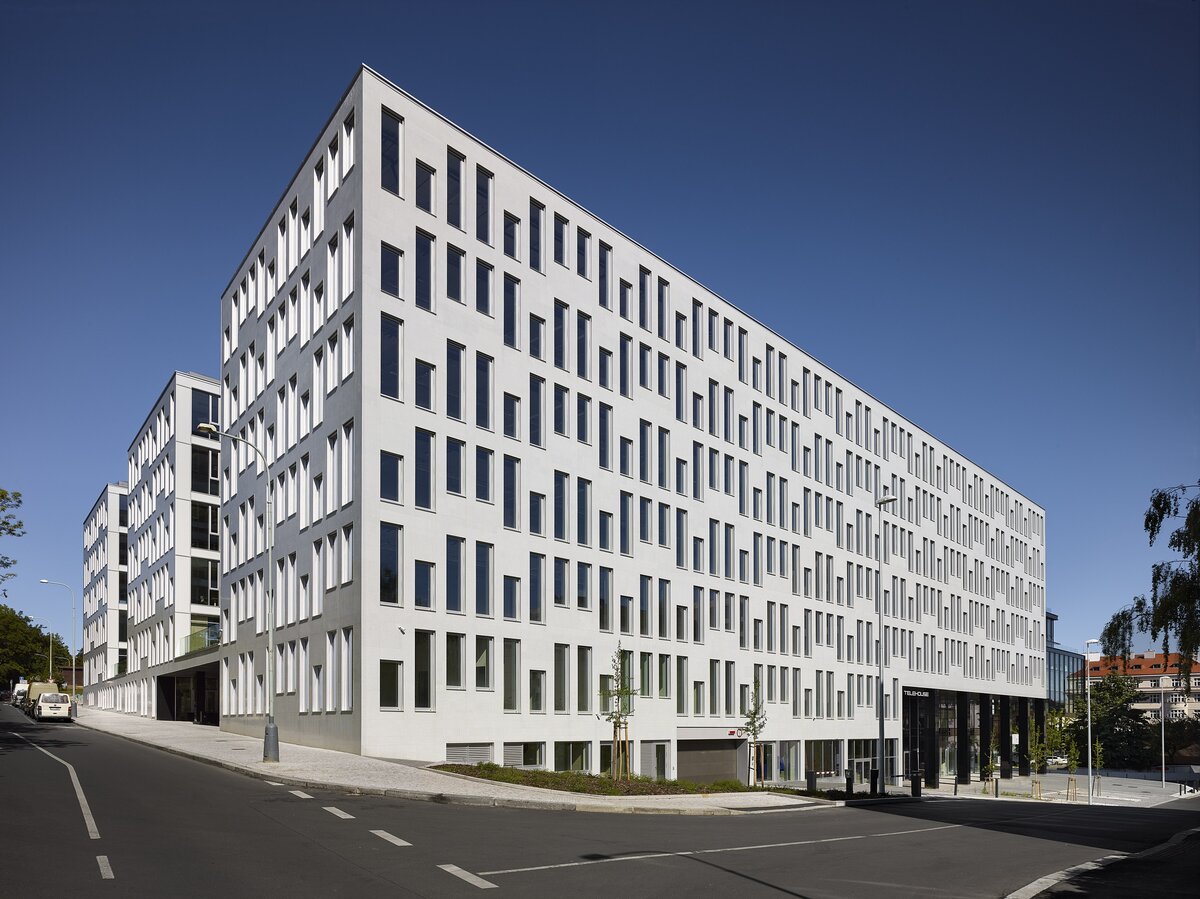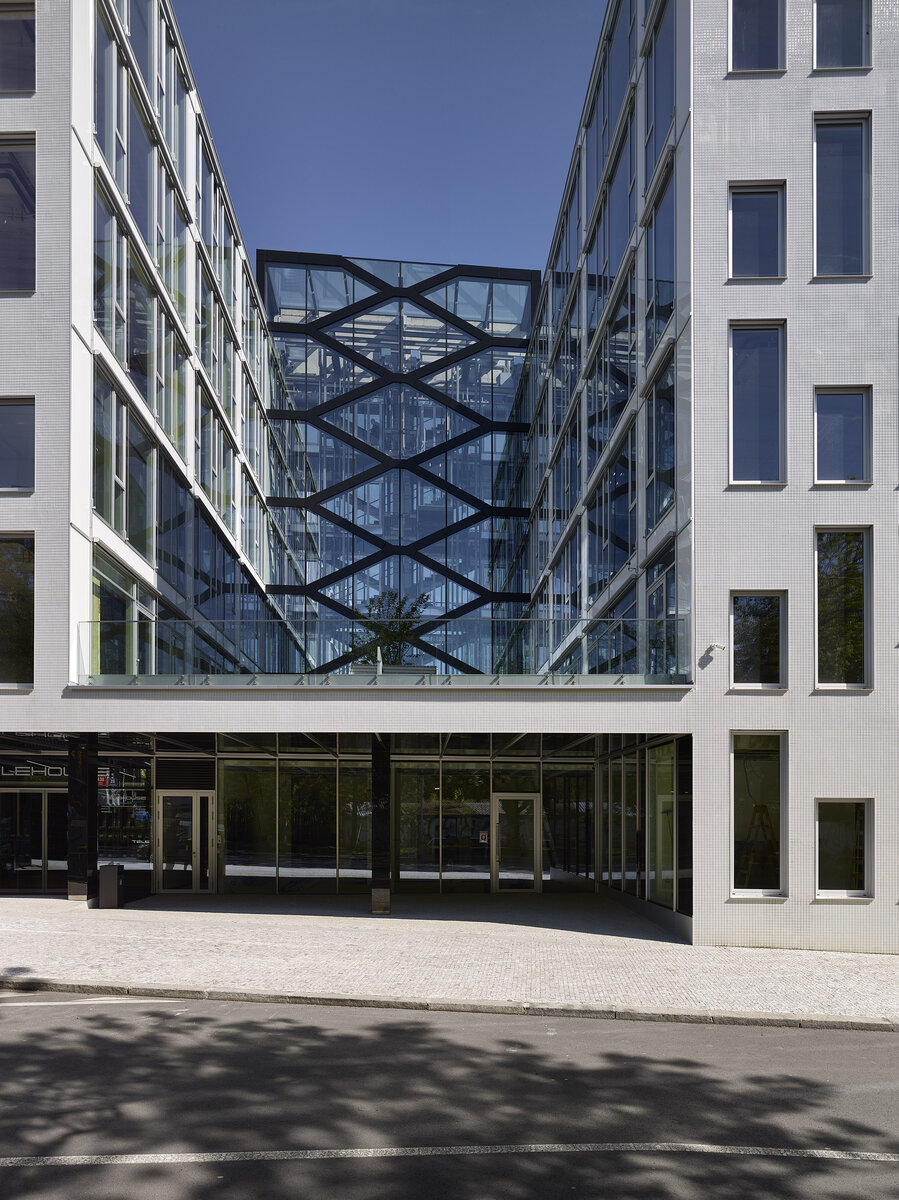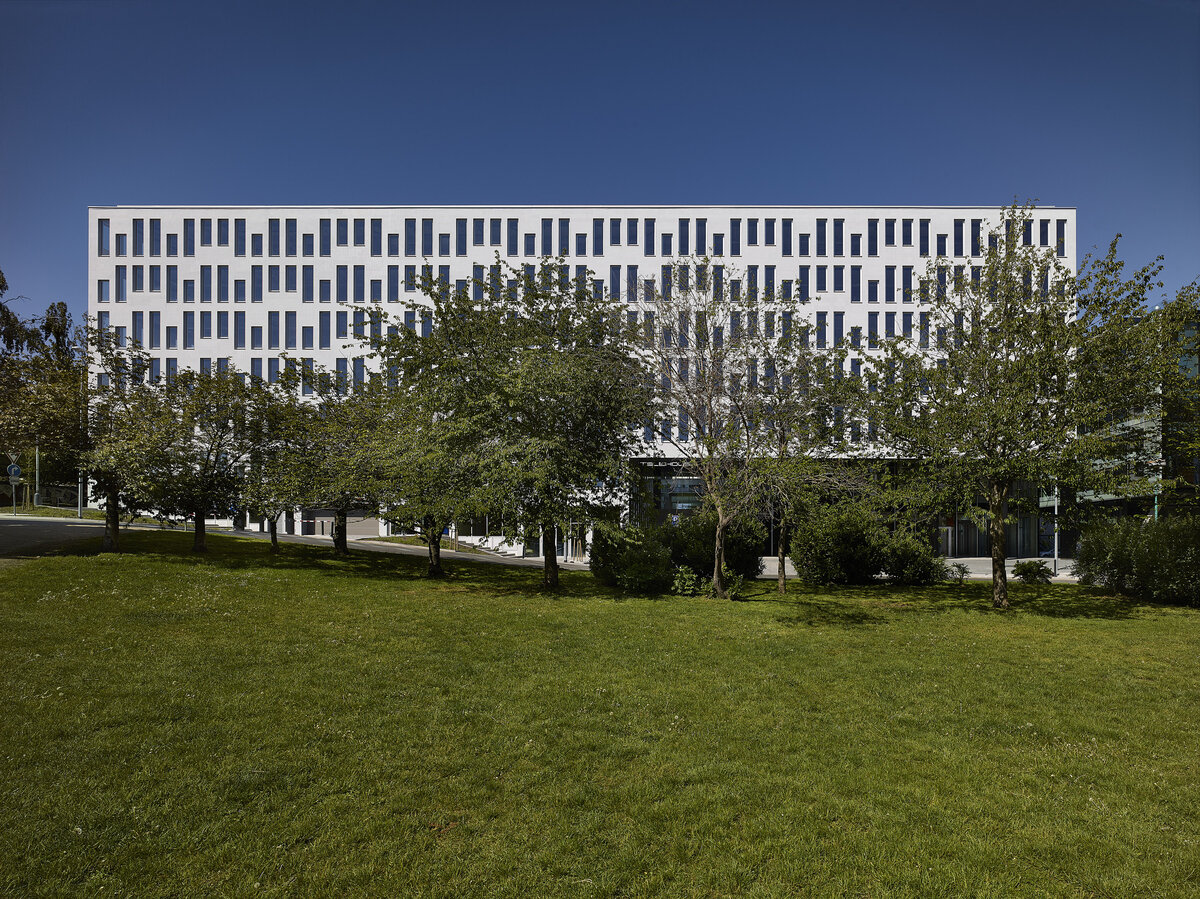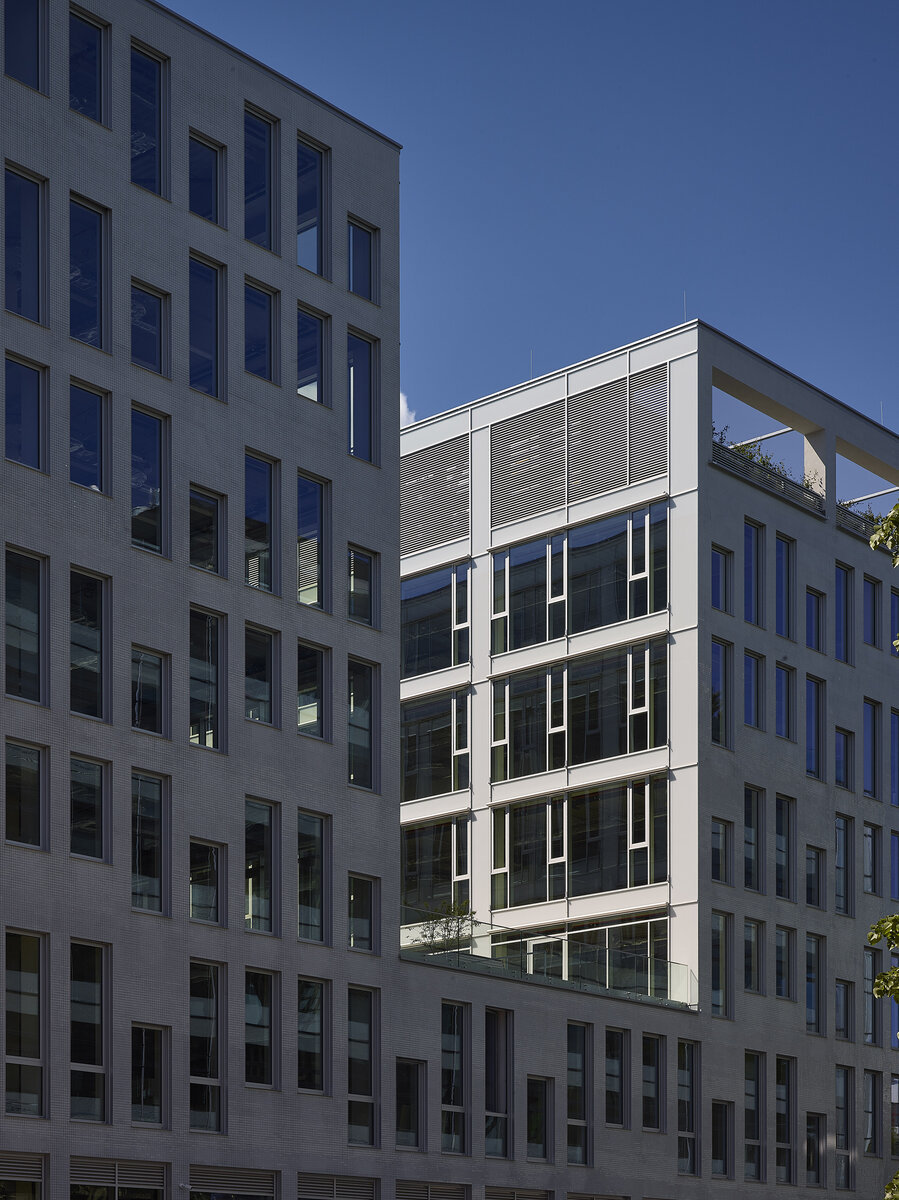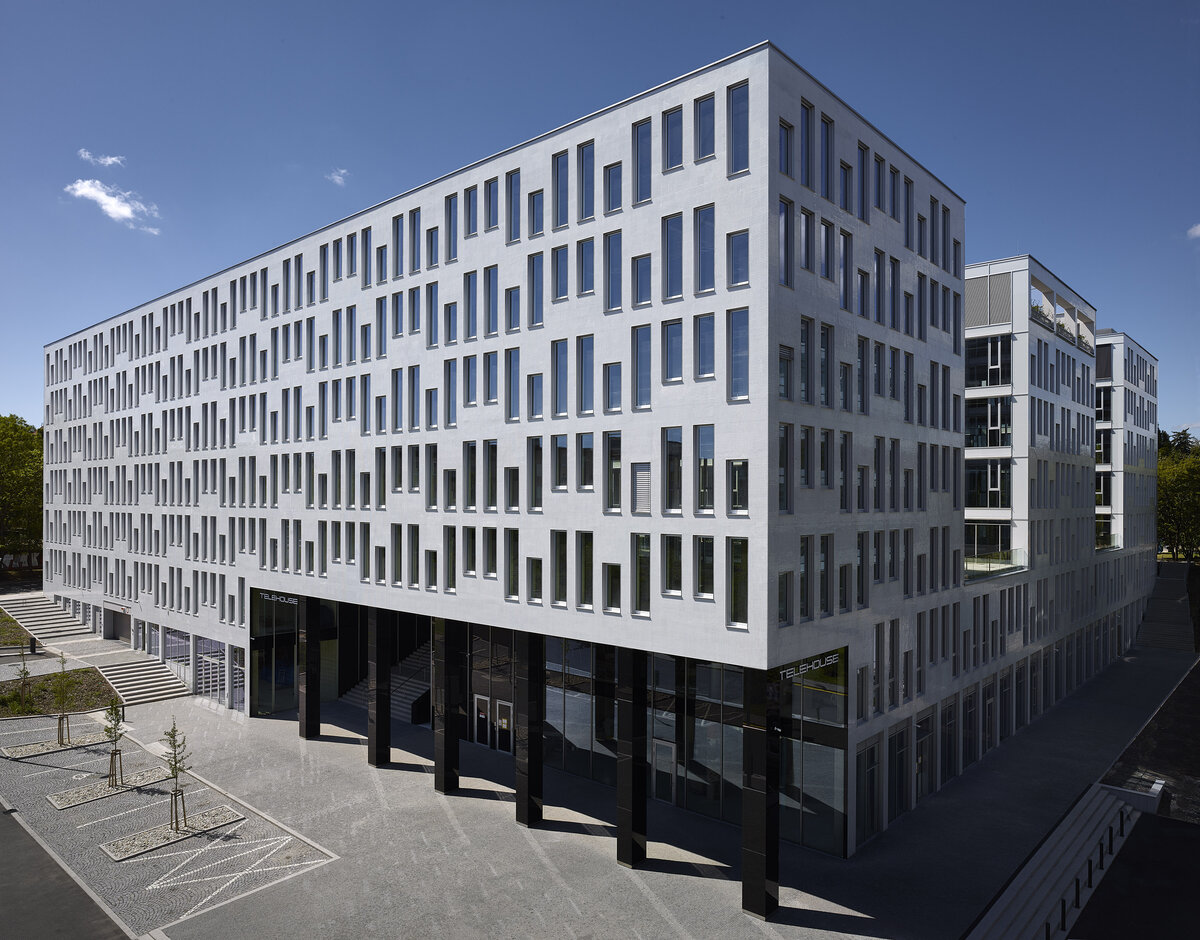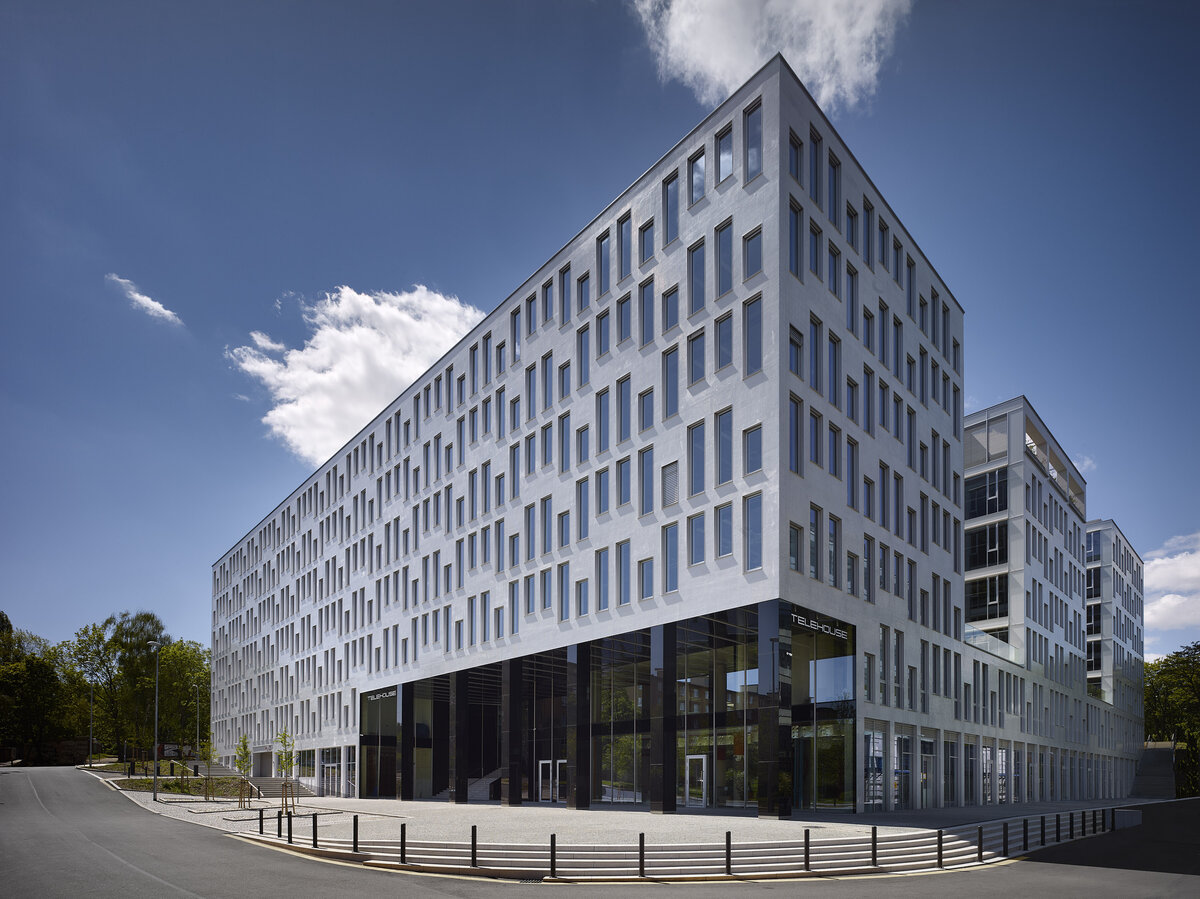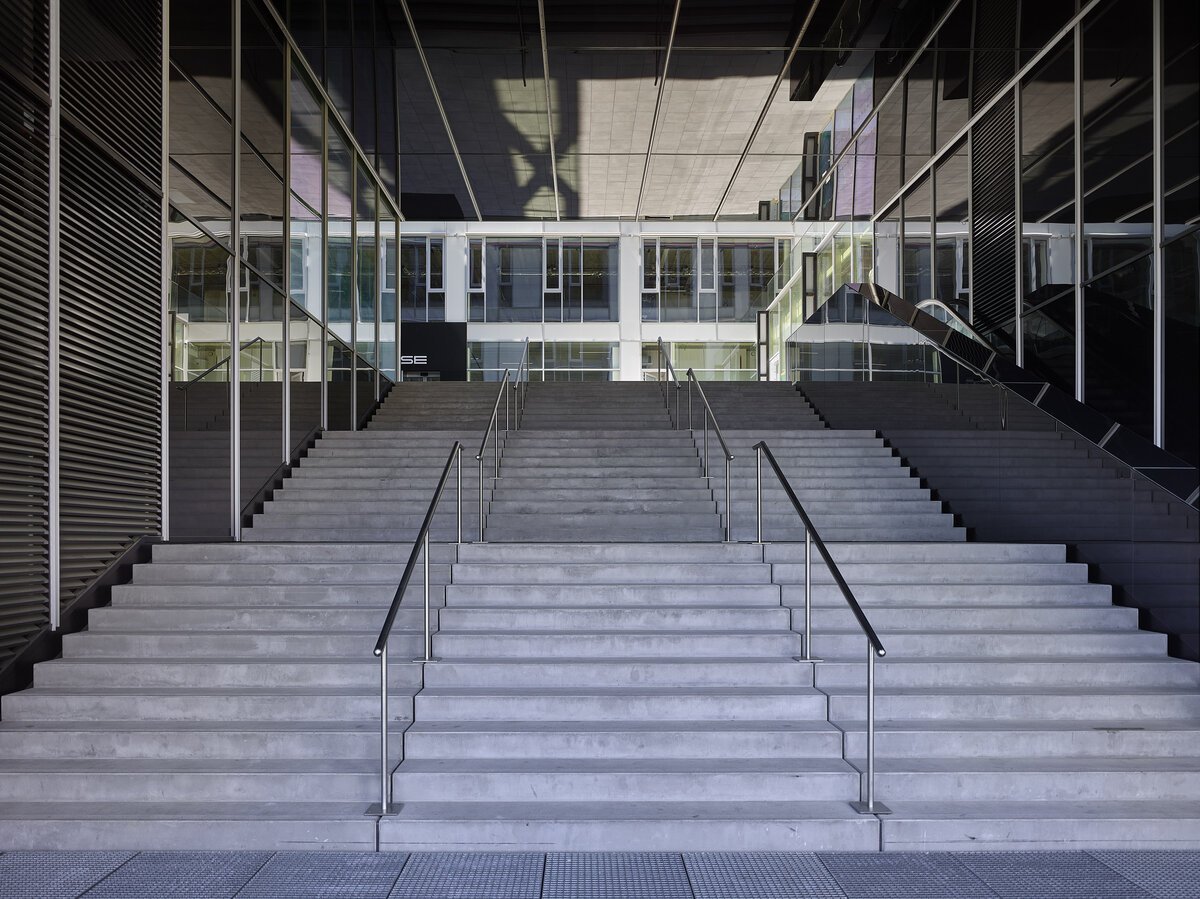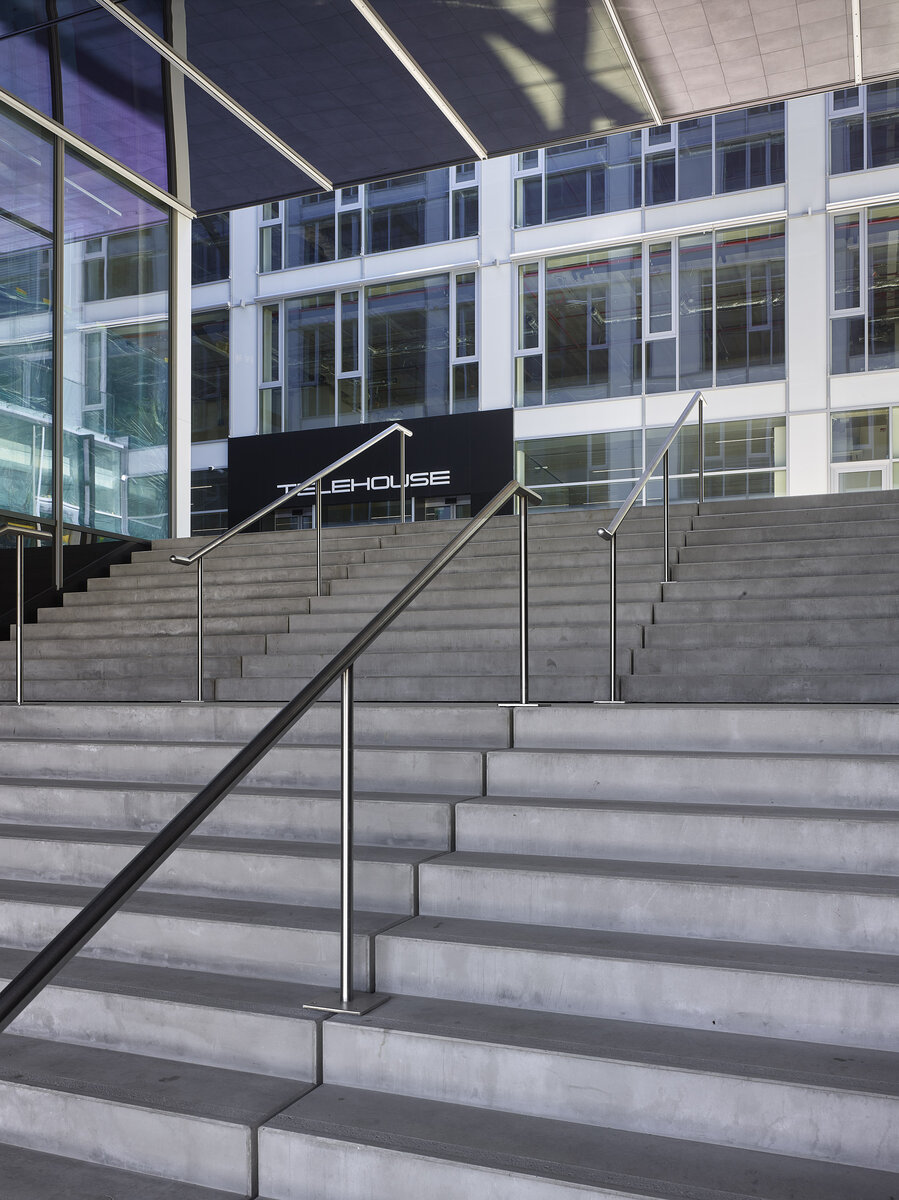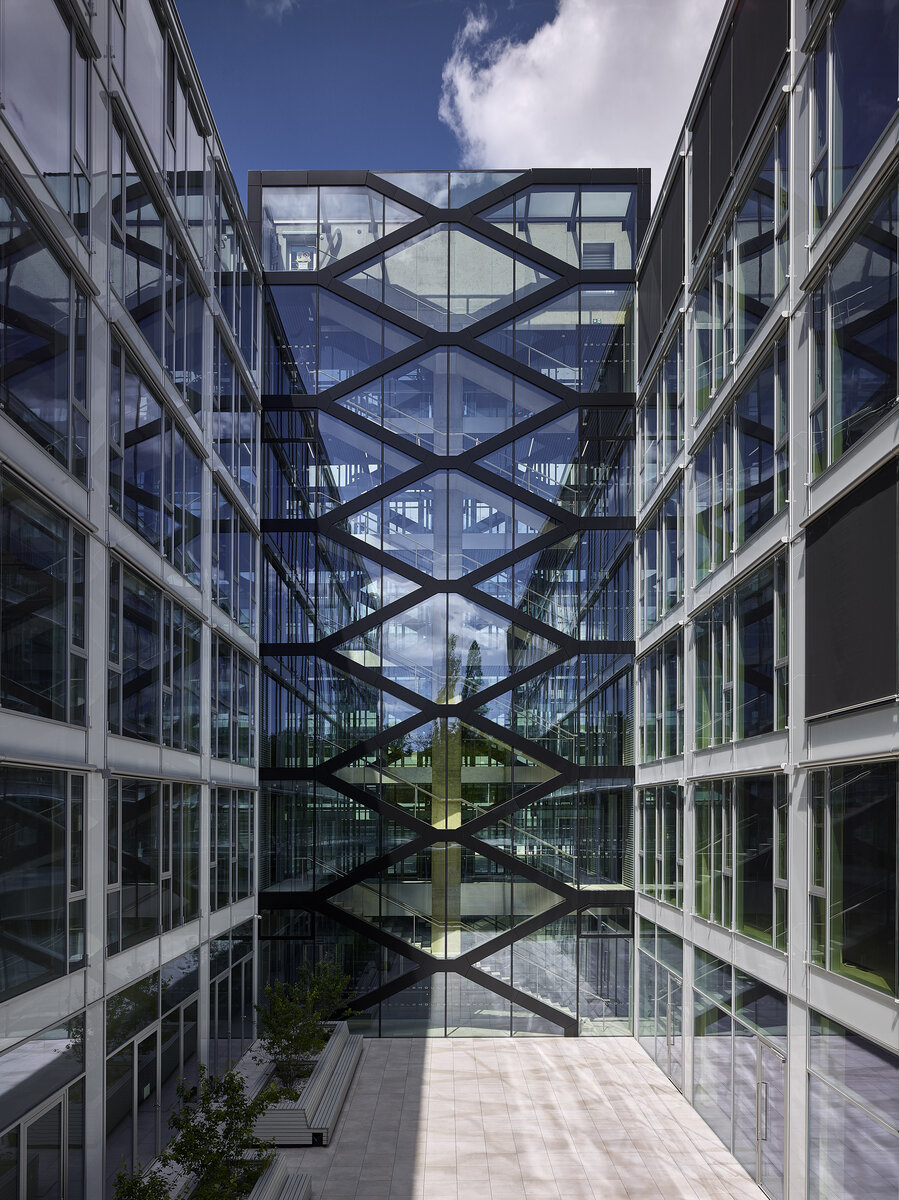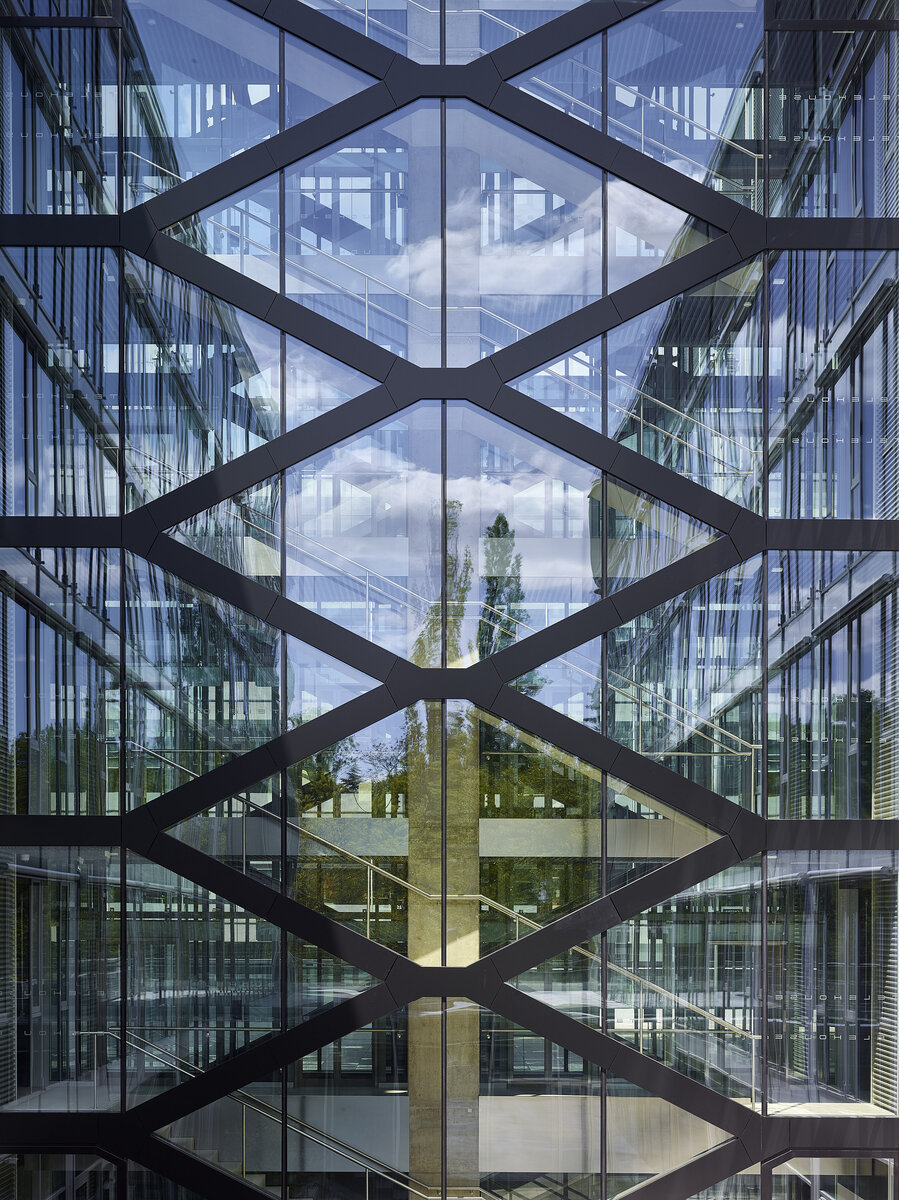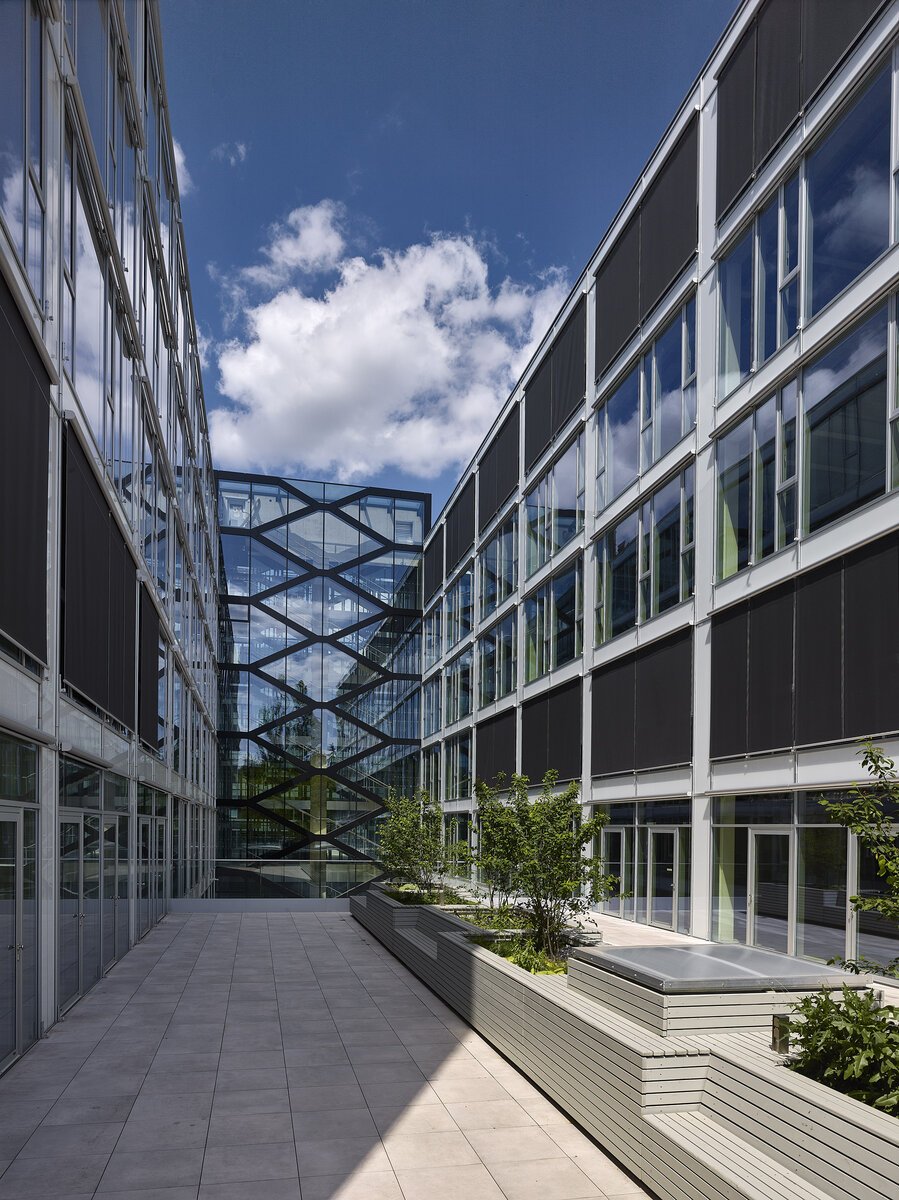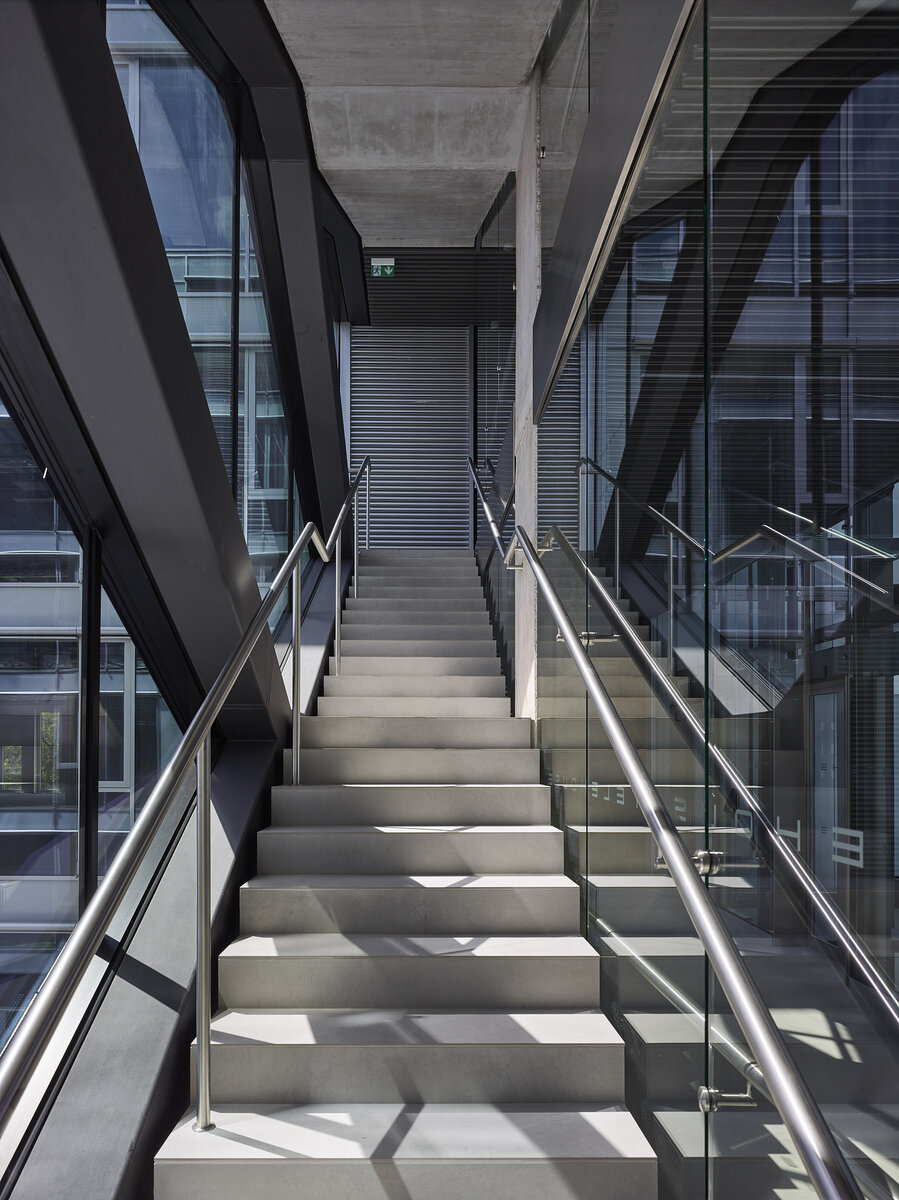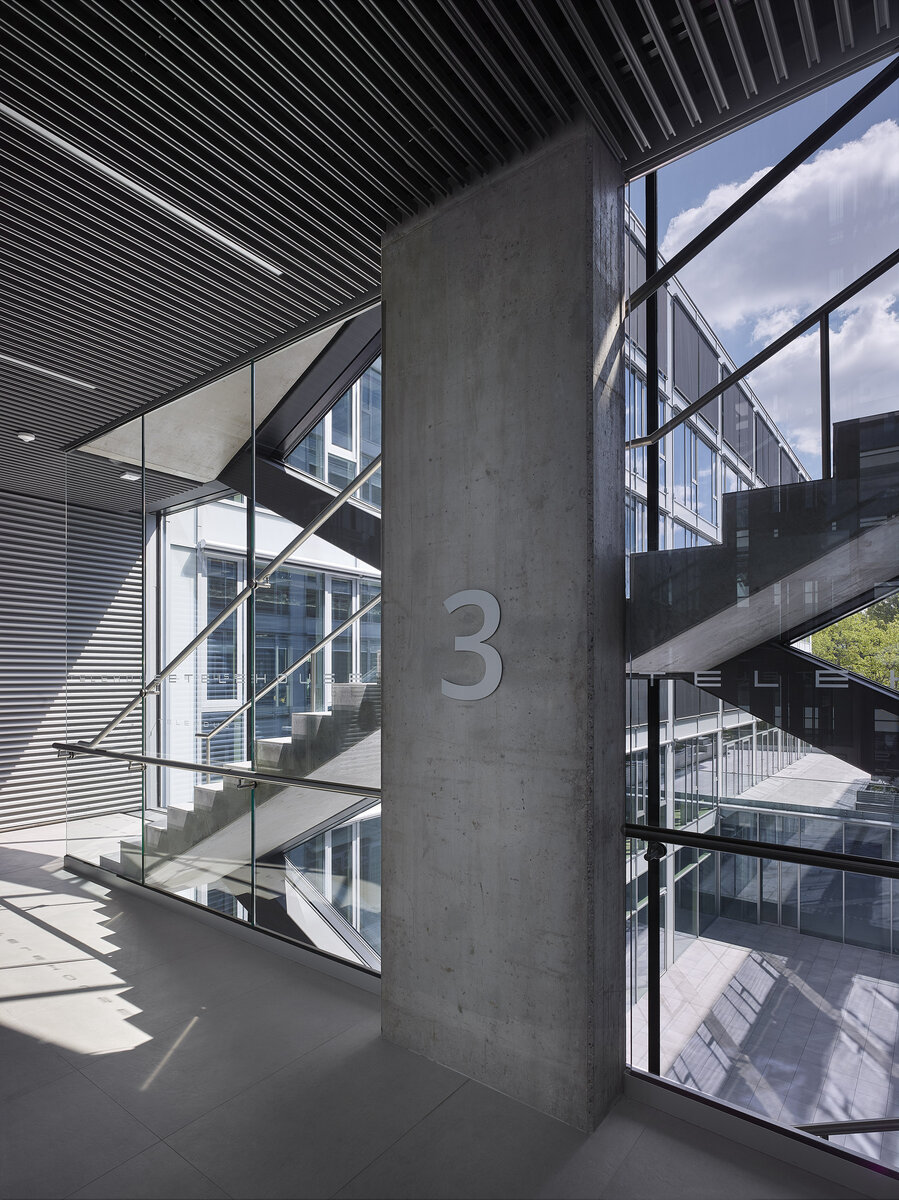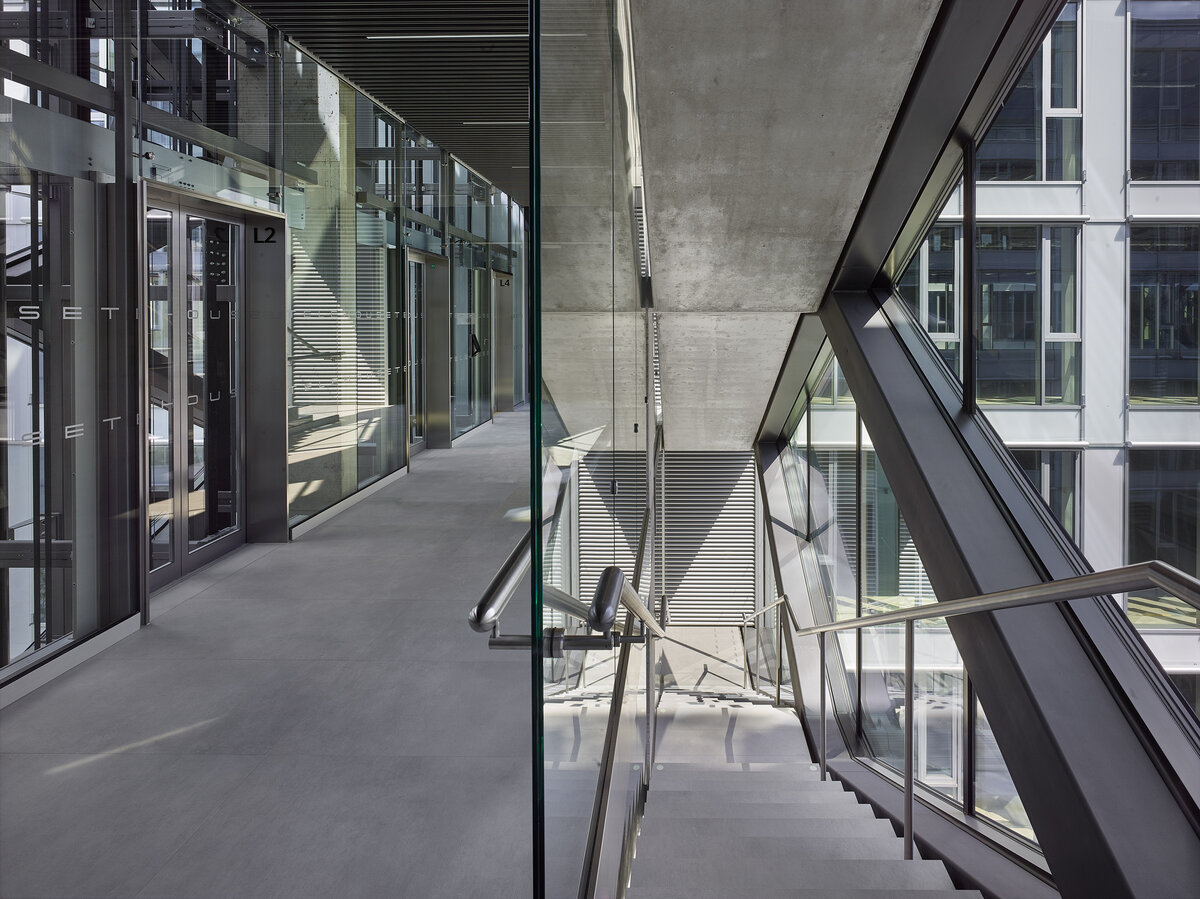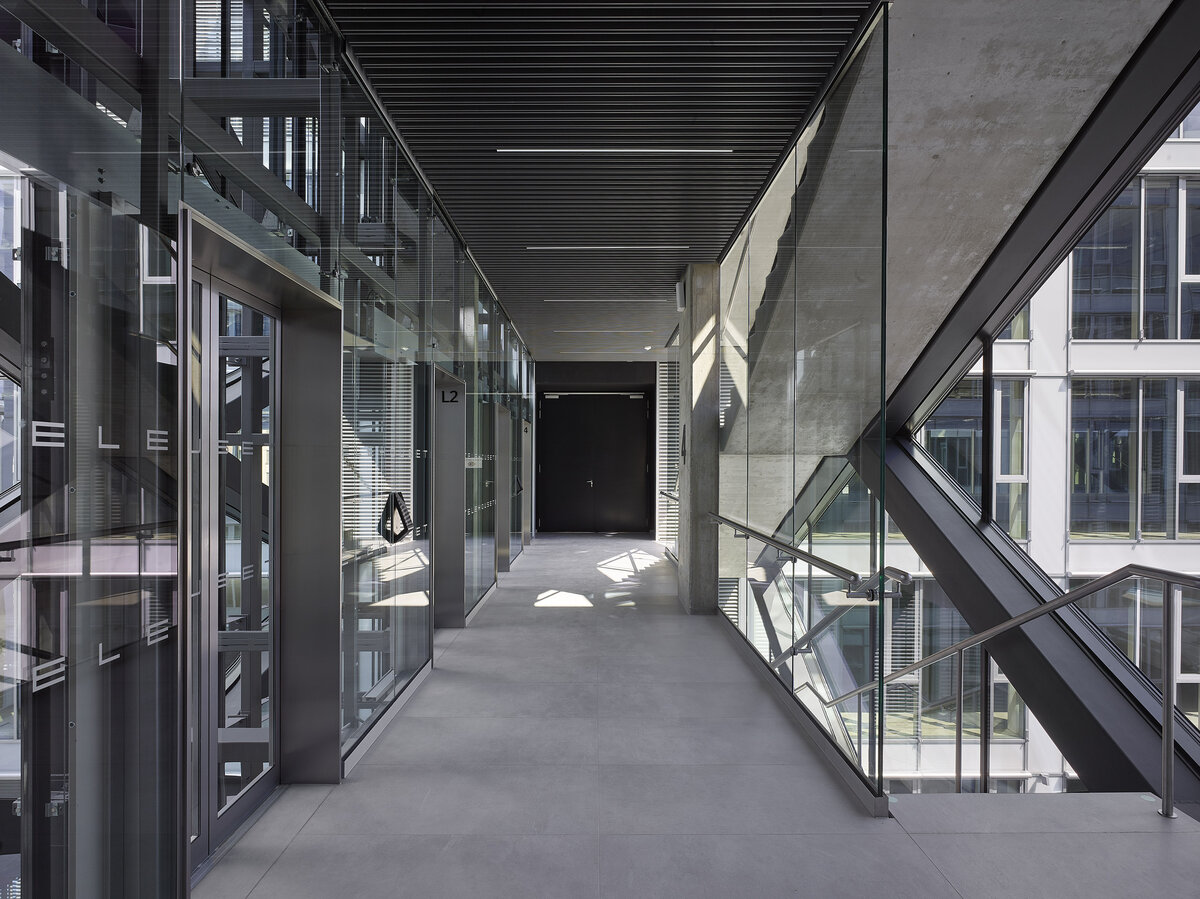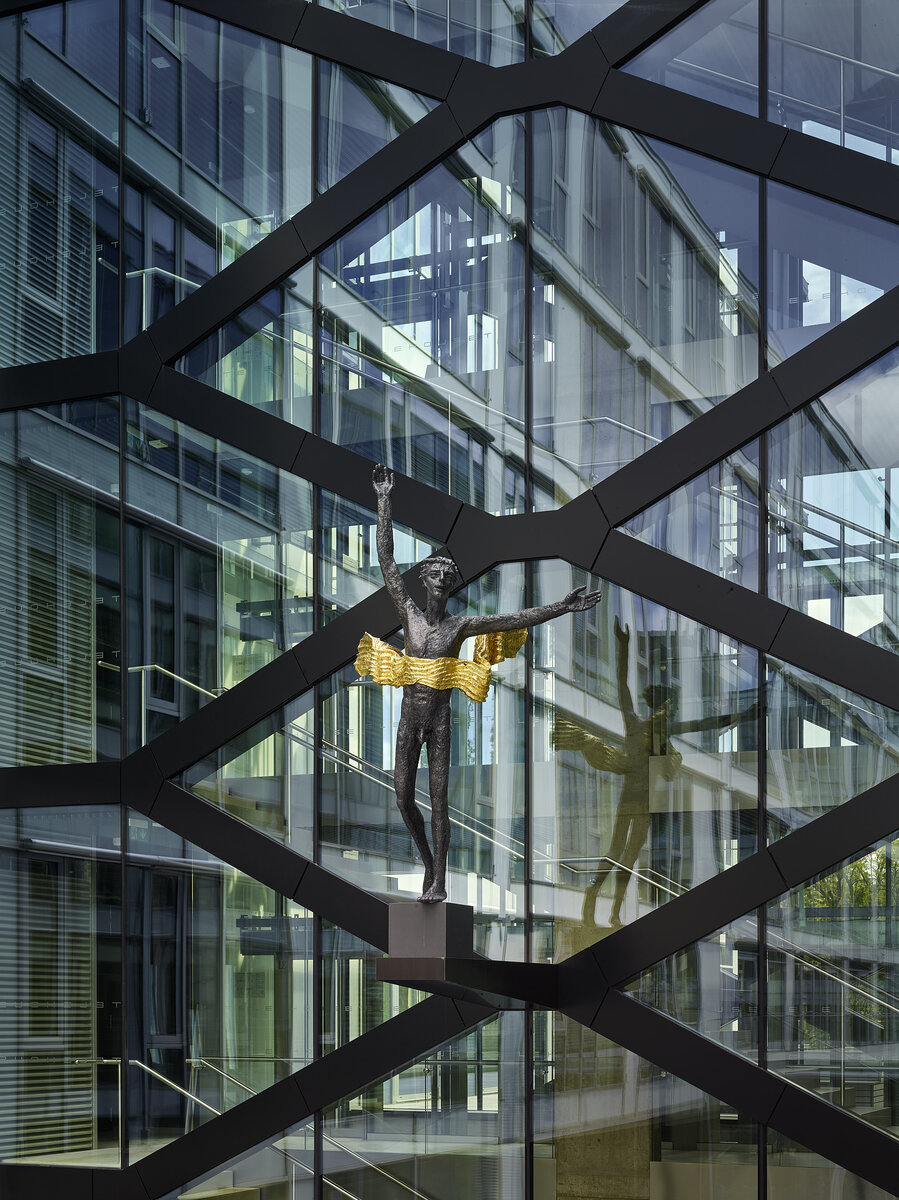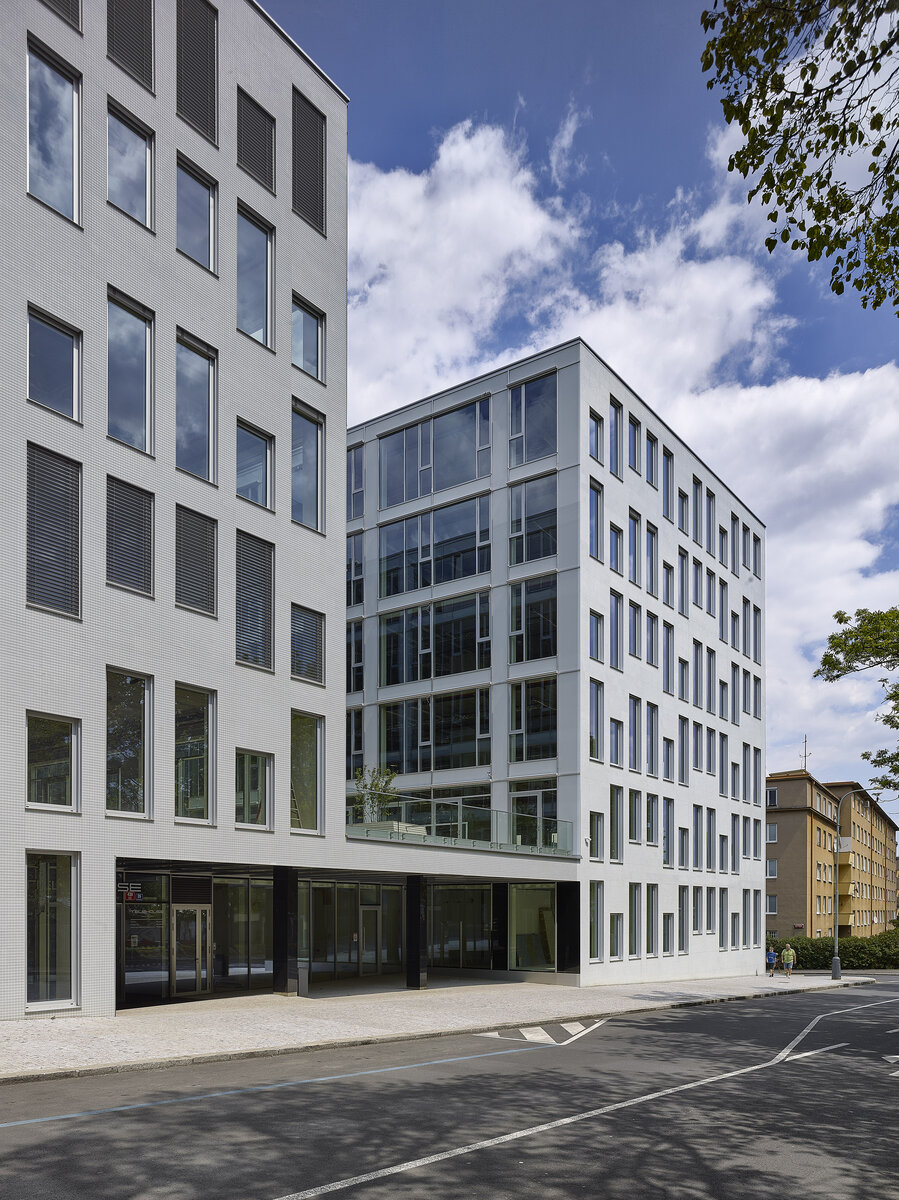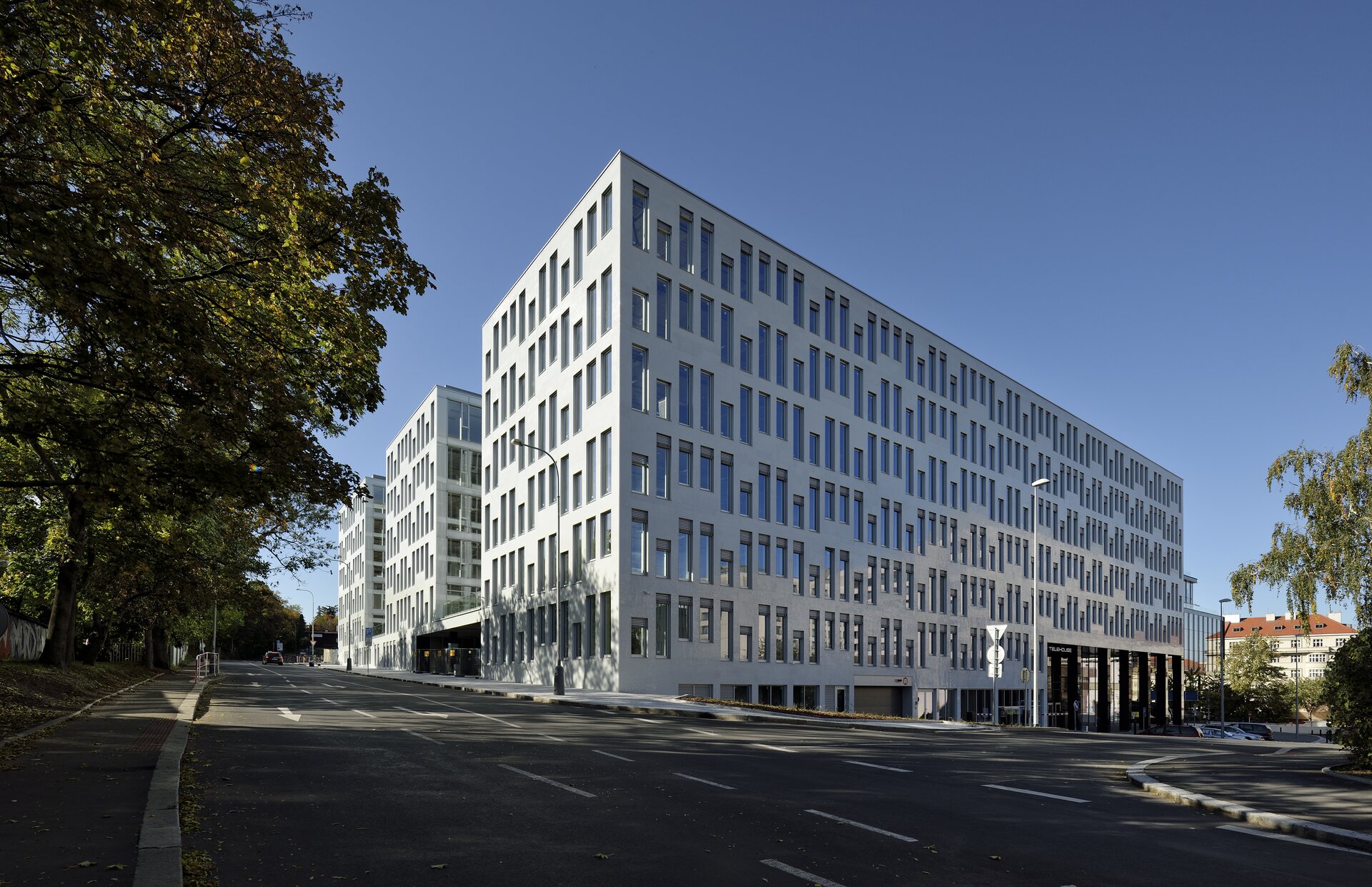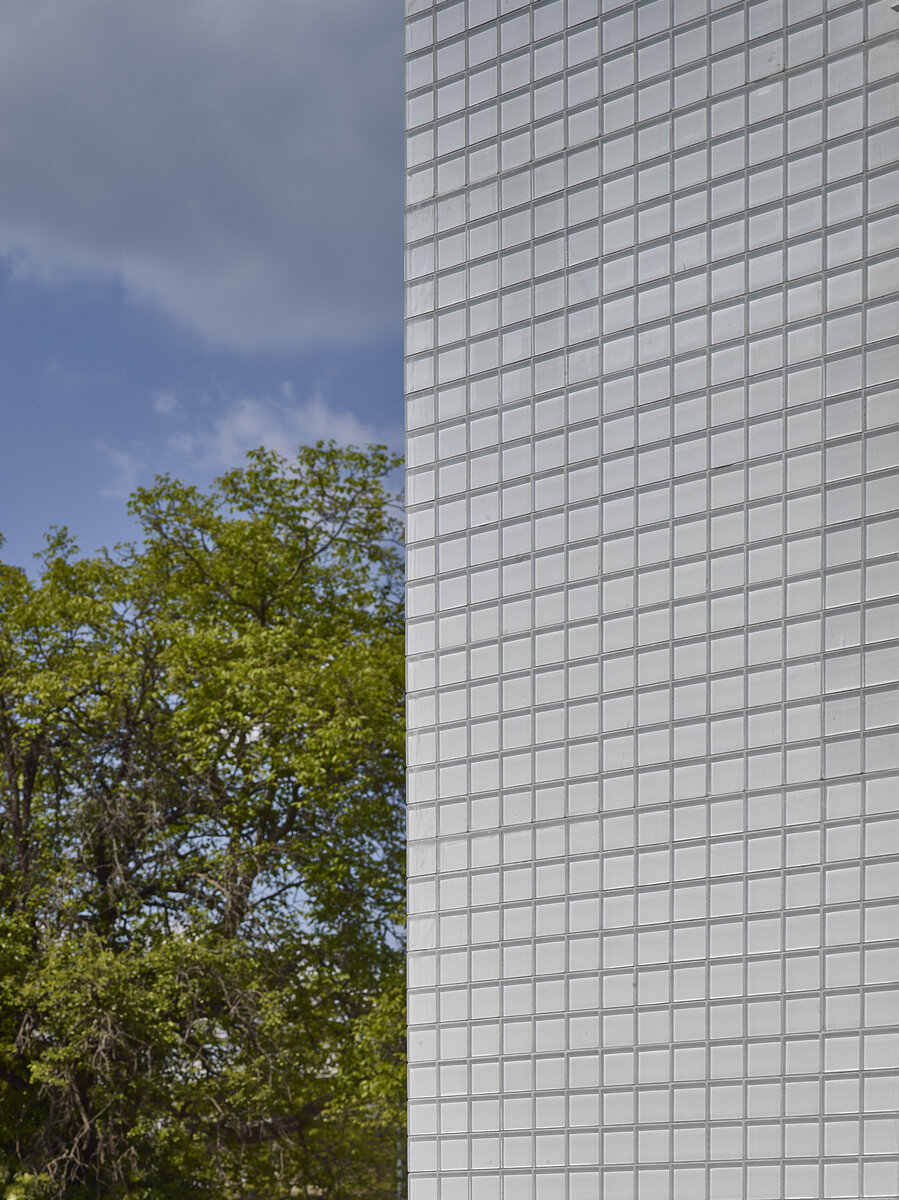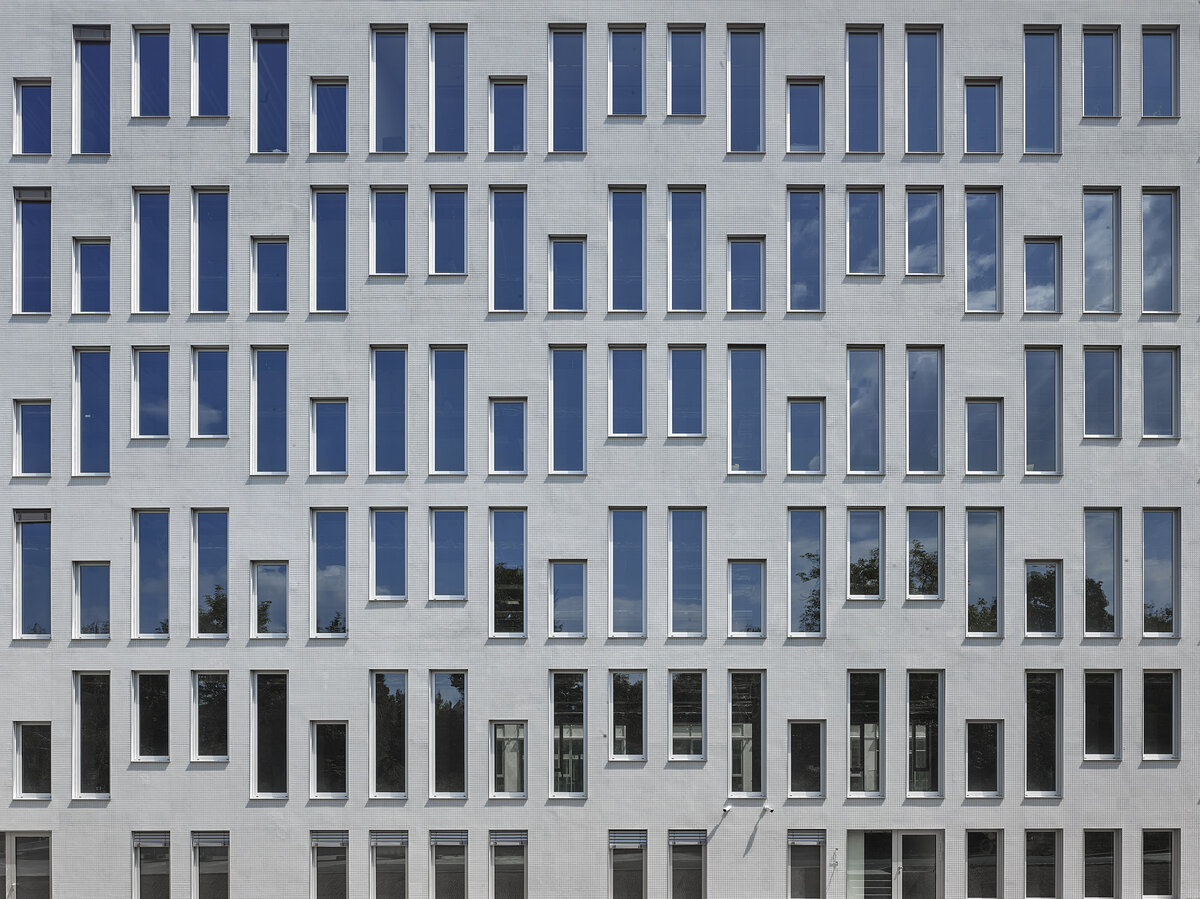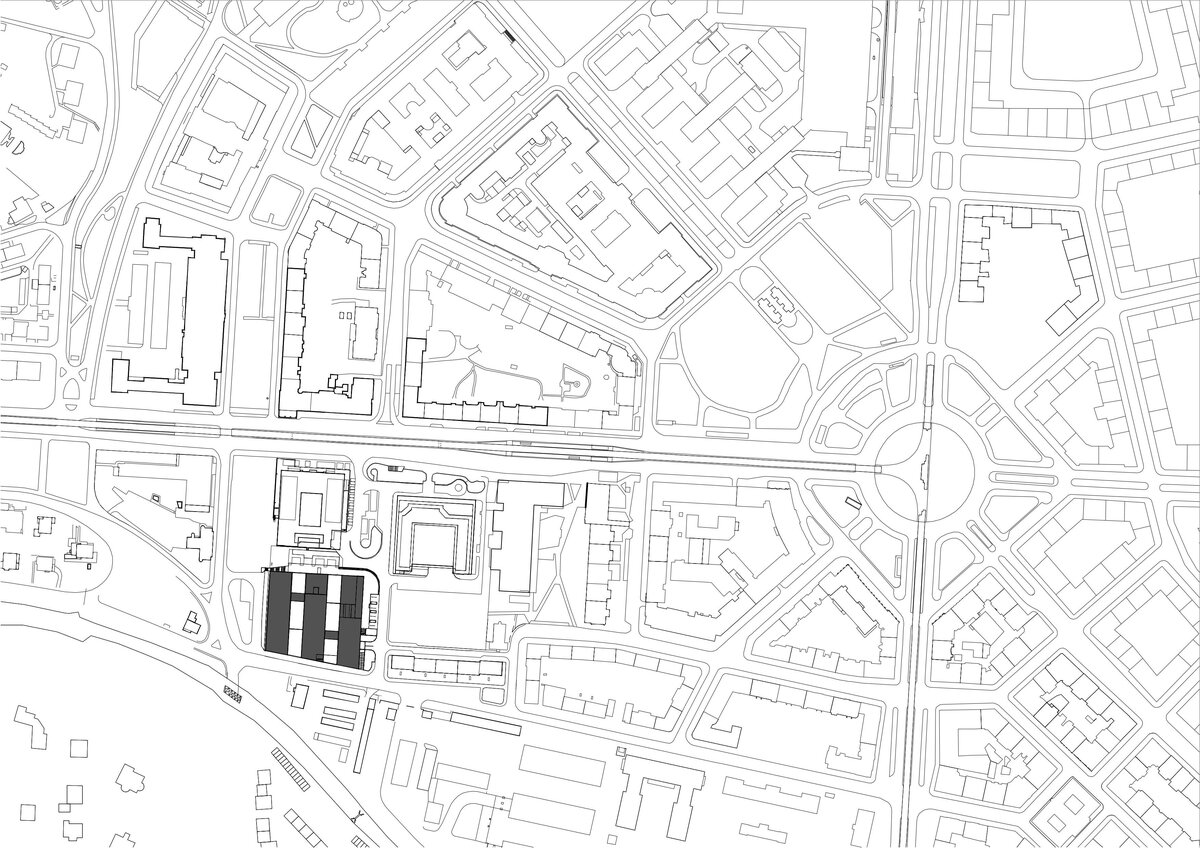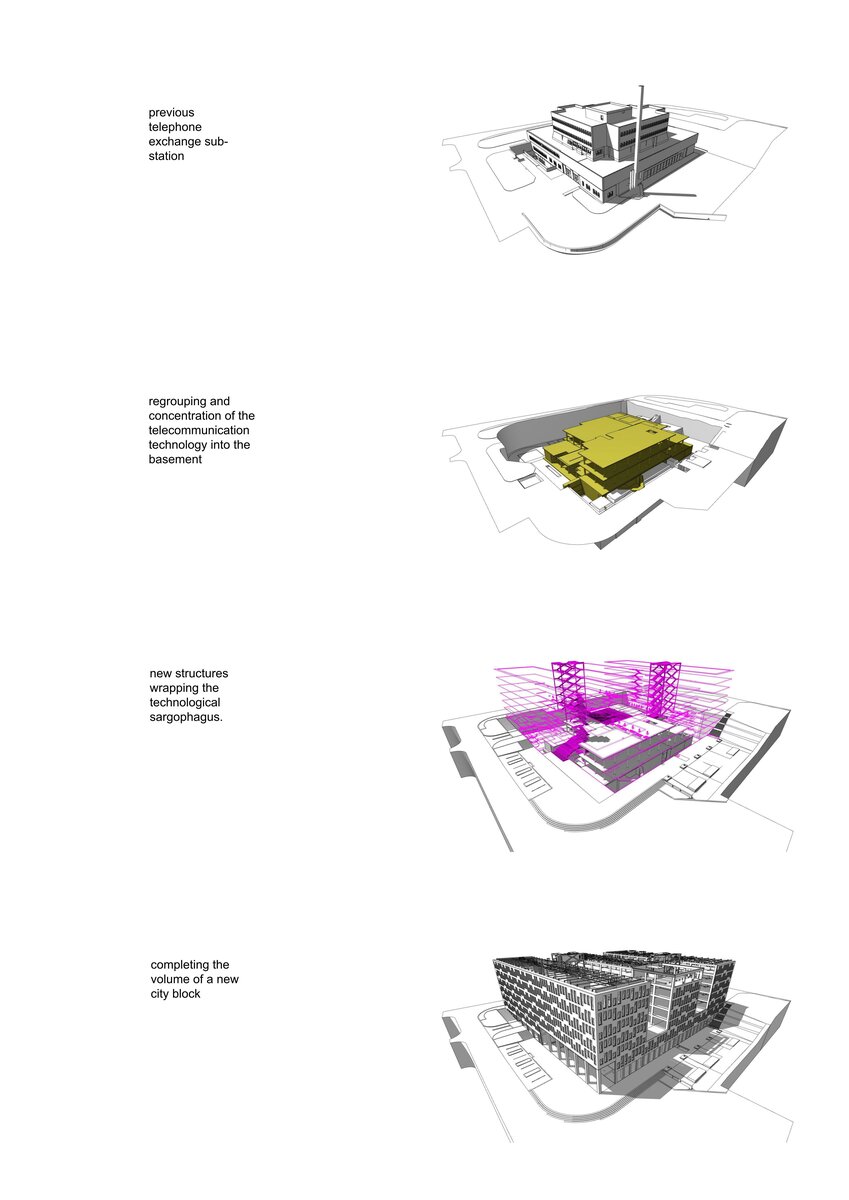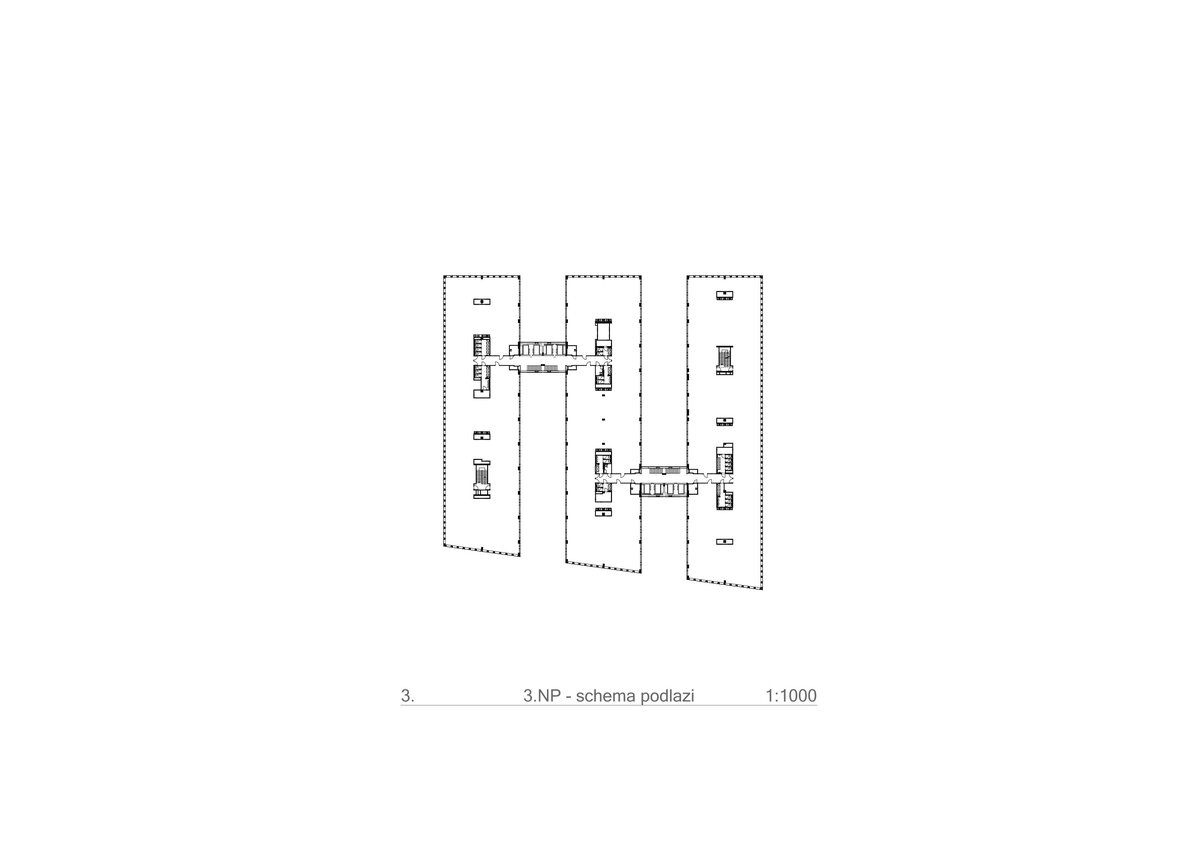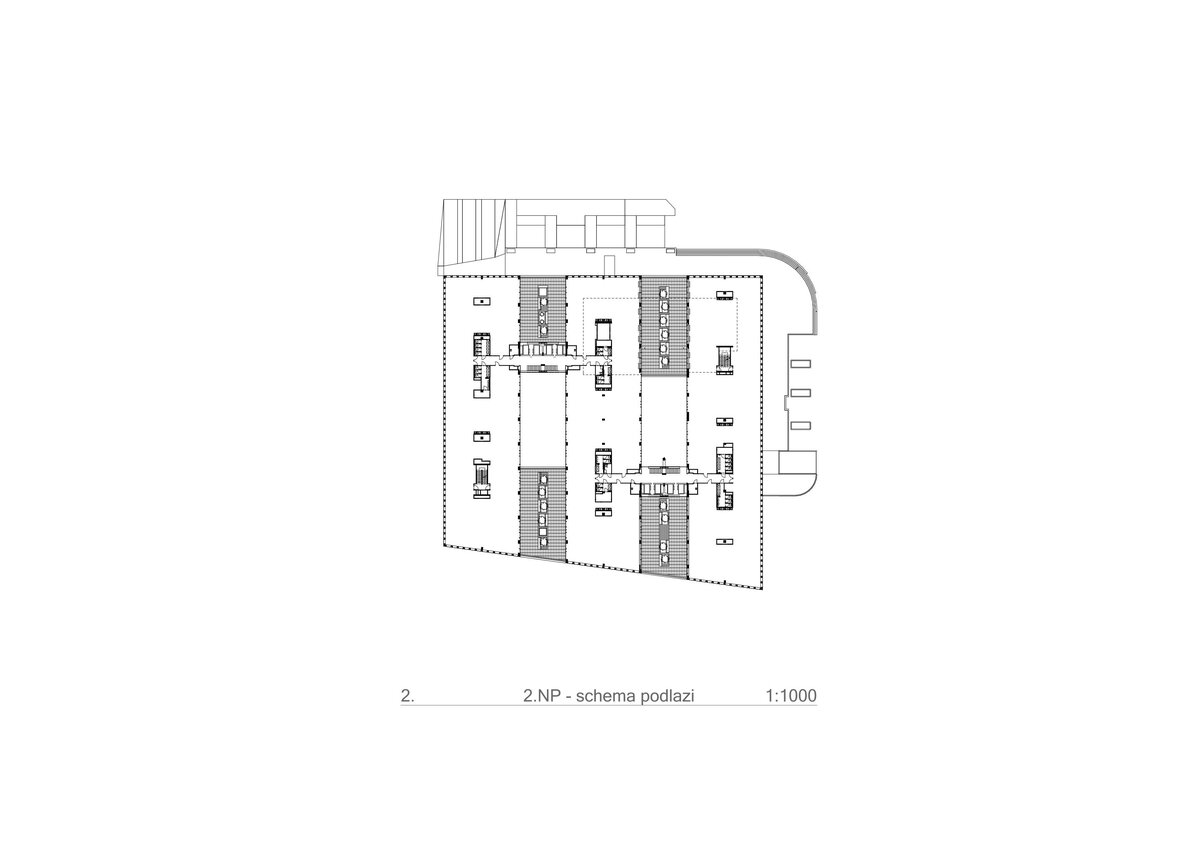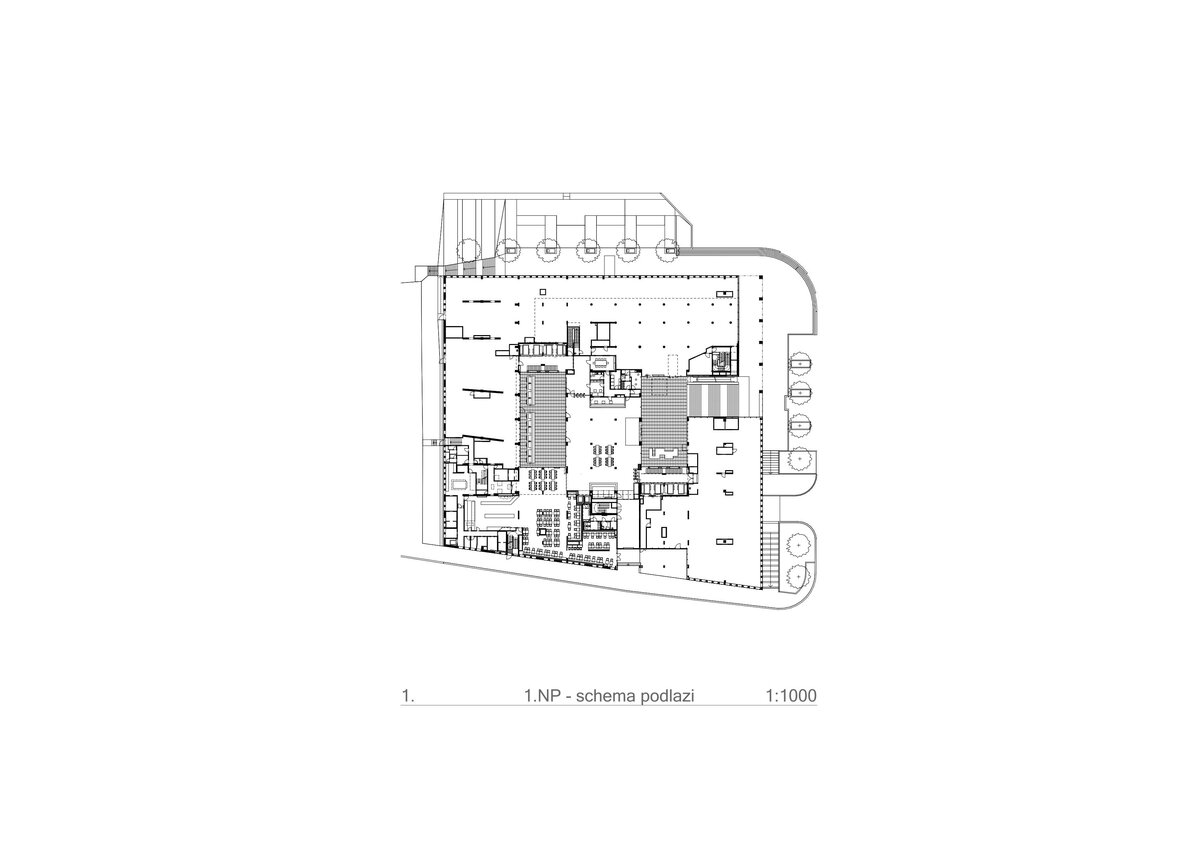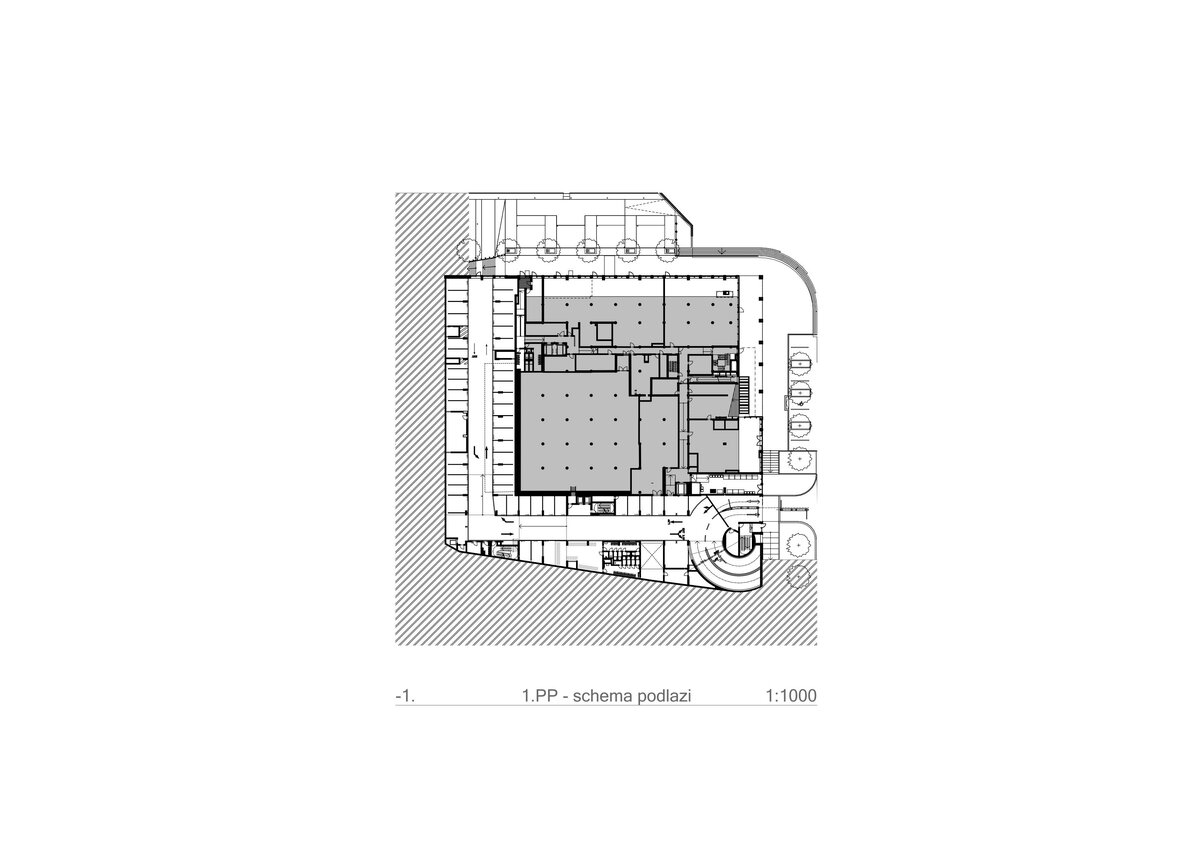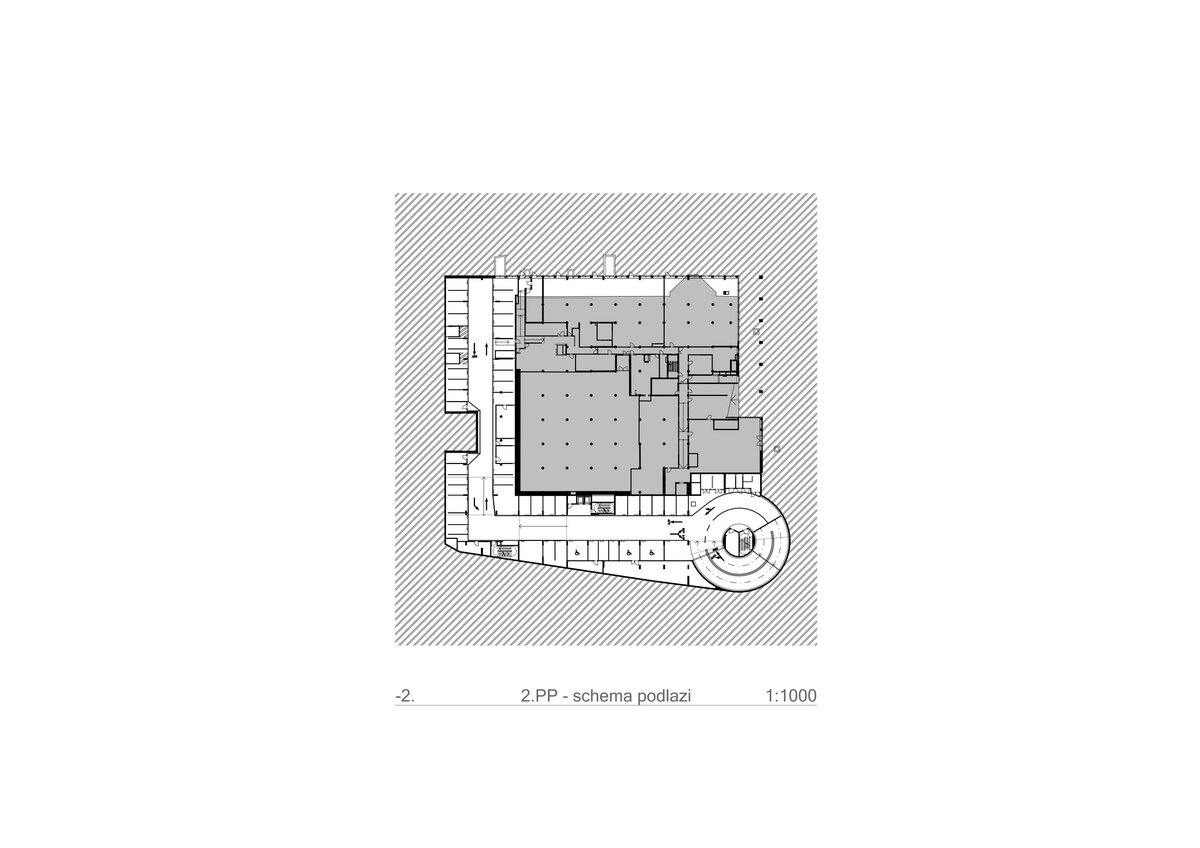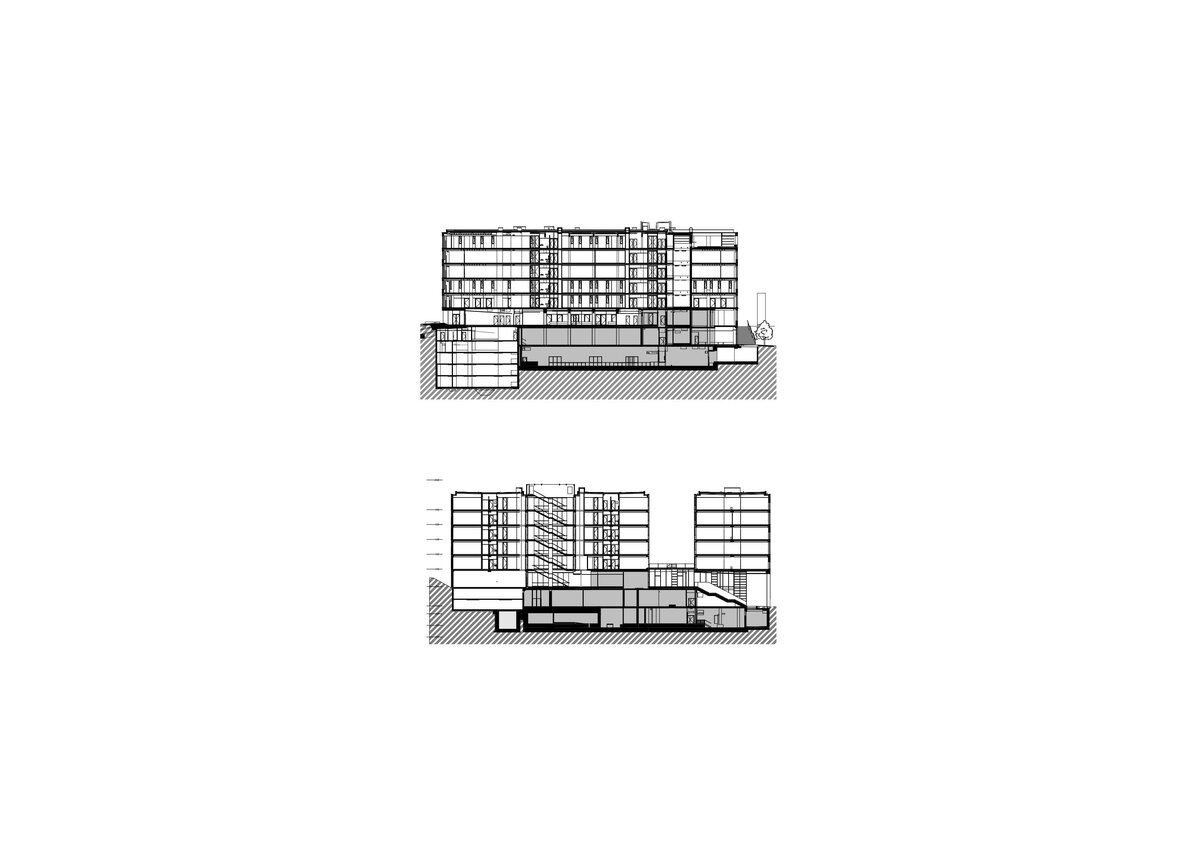| Author |
Jan Schindler, Ludvík Seko, Jakub Murla / SCHINDLER SEKO ARCHITEKTI |
| Studio |
|
| Location |
Generála Píky 26, Praha 6 |
| Investor |
BPD |
| Supplier |
SYNER |
| Date of completion / approval of the project |
November 2021 |
| Fotograf |
|
The TELEHOUSE building is a conversion and extension of a telephone exchange sub-station from the late 1970s. The original building was designed as a pure technological plinth topped with 4 recessed floors mainly for administration. All telecommunication areas are preserved and remained in full operation throughout the construction process. The existing technology is fully integrated into the new architectural and structural concept, creating one fused compact unit – a technological sarcophagus which is embedded inside the new building.
The site was previously organized as an isolated building surrounded by green trenches. The extended footprint and facades are following the urban context by reaching the existing street lines and completing the form of a city block.
A new public park is carried out along the neighbouring PPF-Gate office building (designed by us in 2009), connected to a piazzetta and arcades covering grand stairs and escalators leading to the elevated main entrance patio (bridging the telecom machine rooms).
The building massing concept consists of three 18 m wide office fingers oriented in north-south direction and a mutual distance of 12 m. This grid follows the six-meter modular step of the preserved structures. Two glazed vertical communication cores are placed into the court yards between the fingers, connecting the main entrance hall placed in the middle of the plan.
The new underground parking object in five levels is wrapping the existing structures and cable rooms.
The appropriate cornice level of the block allowed six additional floors on top of the existing structure. This limited load bearing capacity, was achieved by using light construction methods - like cavity ceiling panels placed on Peikko steel beams and load-bearing facade walls.
In memory of the original building we re-installed the statue “Winner” by Olbram Zoubek into the entrance court yard, as wished by the sculptor and the architect of the original building Václav Aulický.
Architect: Schindler Seko architekti
(Jan Schindler, Ludvík Seko, Jakub Murla)
Client: BPD development
Construction costs: 40 M,- Euro
Building site: 8 387m2
Foot print: 5 675 m2
GFA aboveground: 25 373 m2
GFA underground: 17 618 m2
Total net areas: 35 480 m2
Offices: 20 180 m2
Retail: 1 920 m2
M3: 160 000
Planning phases: 2/ 2009 - 5/2016
Construction: 11/ 2016 - 2022
Green building
Environmental certification
| Type and level of certificate |
BREEAM very good
|
Water management
| Is rainwater used for irrigation? |
|
| Is rainwater used for other purposes, e.g. toilet flushing ? |
|
| Does the building have a green roof / facade ? |
|
| Is reclaimed waste water used, e.g. from showers and sinks ? |
|
The quality of the indoor environment
| Is clean air supply automated ? |
|
| Is comfortable temperature during summer and winter automated? |
|
| Is natural lighting guaranteed in all living areas? |
|
| Is artificial lighting automated? |
|
| Is acoustic comfort, specifically reverberation time, guaranteed? |
|
| Does the layout solution include zoning and ergonomics elements? |
|
Principles of circular economics
| Does the project use recycled materials? |
|
| Does the project use recyclable materials? |
|
| Are materials with a documented Environmental Product Declaration (EPD) promoted in the project? |
|
| Are other sustainability certifications used for materials and elements? |
|
Energy efficiency
| Energy performance class of the building according to the Energy Performance Certificate of the building |
B
|
| Is efficient energy management (measurement and regular analysis of consumption data) considered? |
|
| Are renewable sources of energy used, e.g. solar system, photovoltaics? |
|
Interconnection with surroundings
| Does the project enable the easy use of public transport? |
|
| Does the project support the use of alternative modes of transport, e.g cycling, walking etc. ? |
|
| Is there access to recreational natural areas, e.g. parks, in the immediate vicinity of the building? |
|
